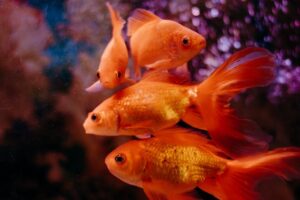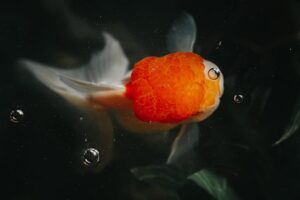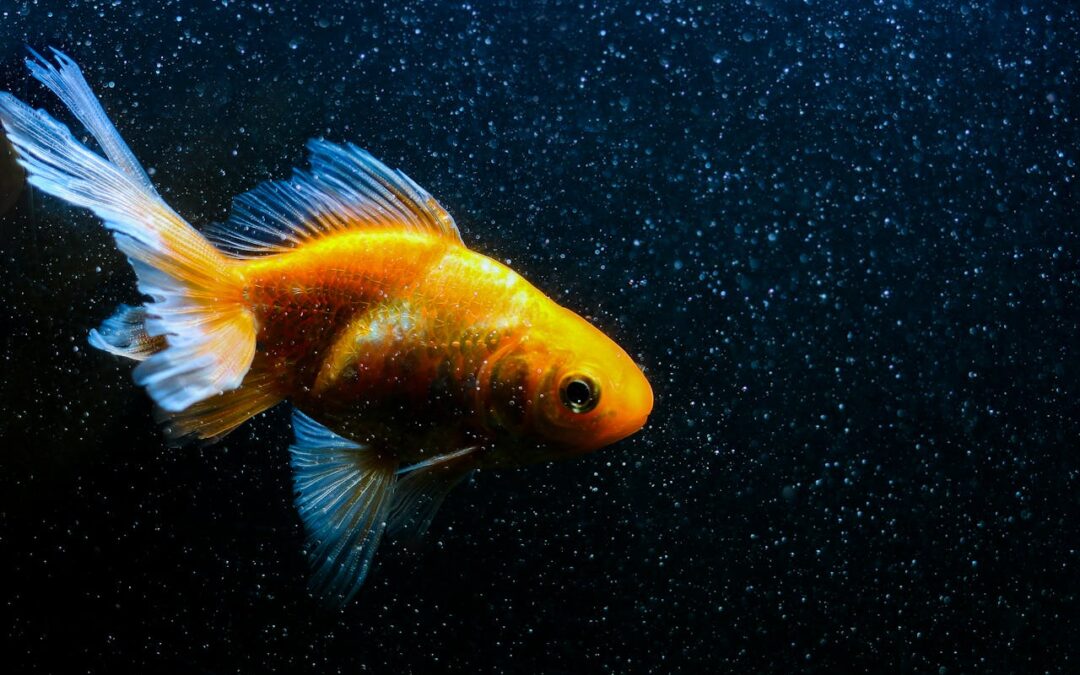Table of Contents
ToggleGoldfish are among the most popular aquarium pets worldwide, cherished for their vibrant colors, diverse varieties, and engaging personalities. But beyond their ornamental beauty, goldfish are fascinating creatures with a rich history, unique biology, and intriguing behaviors. Whether you’re a seasoned aquarist or a curious beginner, this comprehensive guide will uncover 1,800 words’ worth of captivating about Goldfish facts.
1. The History of Goldfish
Goldfish have been adored for centuries. Their domestication dates back to ancient China, around 1,000 years ago during the Tang Dynasty. Originally bred from a species of wild carp, goldfish (Carassius auratus) were initially kept in ponds as ornamental fish. The Chinese nobility often displayed them in their gardens, and their popularity quickly spread to neighboring regions, including Japan and Europe.
By the 17th century, goldfish became a symbol of prosperity and good luck, especially in Chinese culture. Europeans were similarly enchanted, leading to their introduction in home aquariums.
2. Anatomy and Physiology
Goldfish have a remarkable anatomy that supports their adaptability and resilience.
- Coloration: Goldfish get their characteristic hues—ranging from gold and orange to red, white, and black—from pigment cells called chromatophores. However, wild goldfish are naturally olive-green, a far cry from the vibrant hues of their domesticated counterparts.
- Vision: Goldfish can see more colors than humans, as their eyes are sensitive to ultraviolet light.
- Memory and Intelligence: Contrary to the myth of a 3-second memory, goldfish can remember things for months. They are intelligent creatures that can recognize their owners, learn tricks, and respond to feeding routines.
3. Goldfish Varieties
Goldfish come in numerous shapes, sizes, and forms, with over 200 recognized breeds. Here are some popular types:
- Common Goldfish: Sleek and similar in appearance to their wild ancestors, these are hardy and ideal for beginners.

- Fantail Goldfish: Known for their double tails and rounded bodies, these are a favorite for aquariums.

- Oranda: Distinguished by their “wen,” or raspberry-like head growth, Orandas are elegant and unique.

- Black Moor: This variety boasts a velvety black hue and telescopic eyes.

- Ranchu: Often called the “king of goldfish,” Ranchus have a rounded back and lack a dorsal fin.

Each breed has distinct characteristics that make it special, but they all require appropriate care to thrive.
4. Lifespan and Size
Goldfish have impressive potential lifespans, with proper care enabling them to live 10–20 years, or even longer. The oldest recorded goldfish, named Tish, lived for an incredible 43 years!
In terms of size, goldfish can grow significantly larger than most people expect. While those kept in small tanks may only reach 2–3 inches, pond-kept goldfish can grow up to a foot or more in length. Their growth depends on factors like diet, water quality, and space.
5. Goldfish Care Essentials
Goldfish care is more involved than simply placing them in a bowl. These active swimmers require specific conditions to stay healthy.
- Tank Size: Goldfish need ample space. A single goldfish should have at least 20 gallons of water, with an additional 10 gallons per additional fish.
- Water Quality: Goldfish produce a lot of waste, so maintaining clean water is essential. Regular water changes and efficient filtration are a must.
- Diet: Goldfish are omnivores, enjoying a varied diet of flakes, pellets, vegetables, and live or frozen foods like brine shrimp.
- Temperature: Goldfish are cold-water fish, thriving in temperatures between 65°F and 75°F (18°C–24°C). They do not require heaters unless temperatures drop too low.
6. Myths About Goldfish
Goldfish are surrounded by myths, many of which can lead to misunderstandings about their care:
- Myth 1: Goldfish have a 3-second memory.
As mentioned earlier, this is false. Goldfish are intelligent and capable of forming long-term memories. - Myth 2: Goldfish can live happily in a bowl.
Small bowls are harmful as they limit oxygen exchange and promote the accumulation of toxins. Proper tanks with filters are necessary. - Myth 3: Goldfish don’t need filters.
Goldfish are messy eaters and produce a lot of waste. A strong filter is crucial to maintain water quality.
7. Goldfish Behavior
Goldfish exhibit a wide range of behaviors that can provide insights into their well-being:
- Begging for Food: Many goldfish swim to the front of the tank when they see their owner, associating them with feeding time.
- Schooling: Goldfish are social creatures that thrive in groups. Keeping them with companions can enhance their quality of life.
- Sleeping Patterns: Goldfish don’t have eyelids, so they never close their eyes. However, they do have distinct resting periods, often hovering motionless near the bottom of the tank.
8. Breeding Goldfish
Breeding goldfish can be a rewarding but challenging process. Goldfish are egg-layers, and they spawn when water temperatures increase in spring.
- Courtship: Males chase females, nudging their sides to encourage them to lay eggs.
- Egg-Laying: A female can lay hundreds to thousands of eggs in one session. Eggs stick to plants or decorations in the tank.
- Fry Development: Eggs hatch within 4–7 days. Baby goldfish, called fry, require special care, including finely crushed food and pristine water conditions.
9. Goldfish in Culture
Goldfish have a deep cultural significance, especially in China and Japan. They are symbols of luck, wealth, and harmony. Traditional Chinese art often features goldfish as a motif of prosperity. In Japan, the summer festival game “Kingyo-sukui” (goldfish scooping) celebrates these beloved creatures.
10. Common Health Issues
Goldfish are hardy but not immune to diseases. Common ailments include:
- Swim Bladder Disorder: Causes difficulty swimming, often due to overfeeding or poor diet.
- Ich (White Spot Disease): A parasitic infection that appears as white spots on the fish’s body.
- Fin Rot: A bacterial infection resulting from poor water conditions.
Prevention through proper care and quick treatment when symptoms appear are key to keeping goldfish healthy.
11. Goldfish in the Wild
While domesticated goldfish are tank-bound, escaped or released goldfish can pose ecological threats in the wild. Goldfish are invasive species in many regions, outcompeting native fish for resources. They can grow larger in the wild, sometimes reaching several pounds in weight.
12. Fun Facts About Goldfish
- Goldfish can live in low-light conditions but need some natural light to maintain their vibrant coloration.
- They have no stomachs; their food passes quickly through their digestive system, requiring frequent but small feedings.
- Goldfish can produce sounds by grinding their pharyngeal teeth, a set of teeth in their throats.
13. Caring for Goldfish Responsibly
Goldfish ownership is a long-term commitment. They require more care than many realize, but their engaging personalities and beauty make the effort worthwhile. Here are some tips for responsible ownership:
- Research Before Buying: Learn about the specific needs of the goldfish variety you’re interested in.
- Provide a Spacious Habitat: Avoid small tanks or bowls.
- Commit to Regular Maintenance: Consistent water changes and cleaning are essential.
14. The Joy of Goldfish Keeping
Goldfish are more than just pretty faces. Their intelligence, curiosity, and adaptability make them delightful pets. Watching their antics, from playfully chasing bubbles to interacting with their tank mates, is a source of endless joy.
Whether you’re fascinated by their history, mesmerized by their beauty, or intrigued by their behaviors, goldfish offer a unique and rewarding experience for anyone willing to invest in their care.
In conclusion, goldfish are not just ornamental fish; they are living beings with rich histories, complex behaviors, and specific care requirements. Understanding these facts ensures that you can provide a happy and healthy life for your goldfish, allowing you to enjoy the company of these charming aquatic companions for many years to come.






